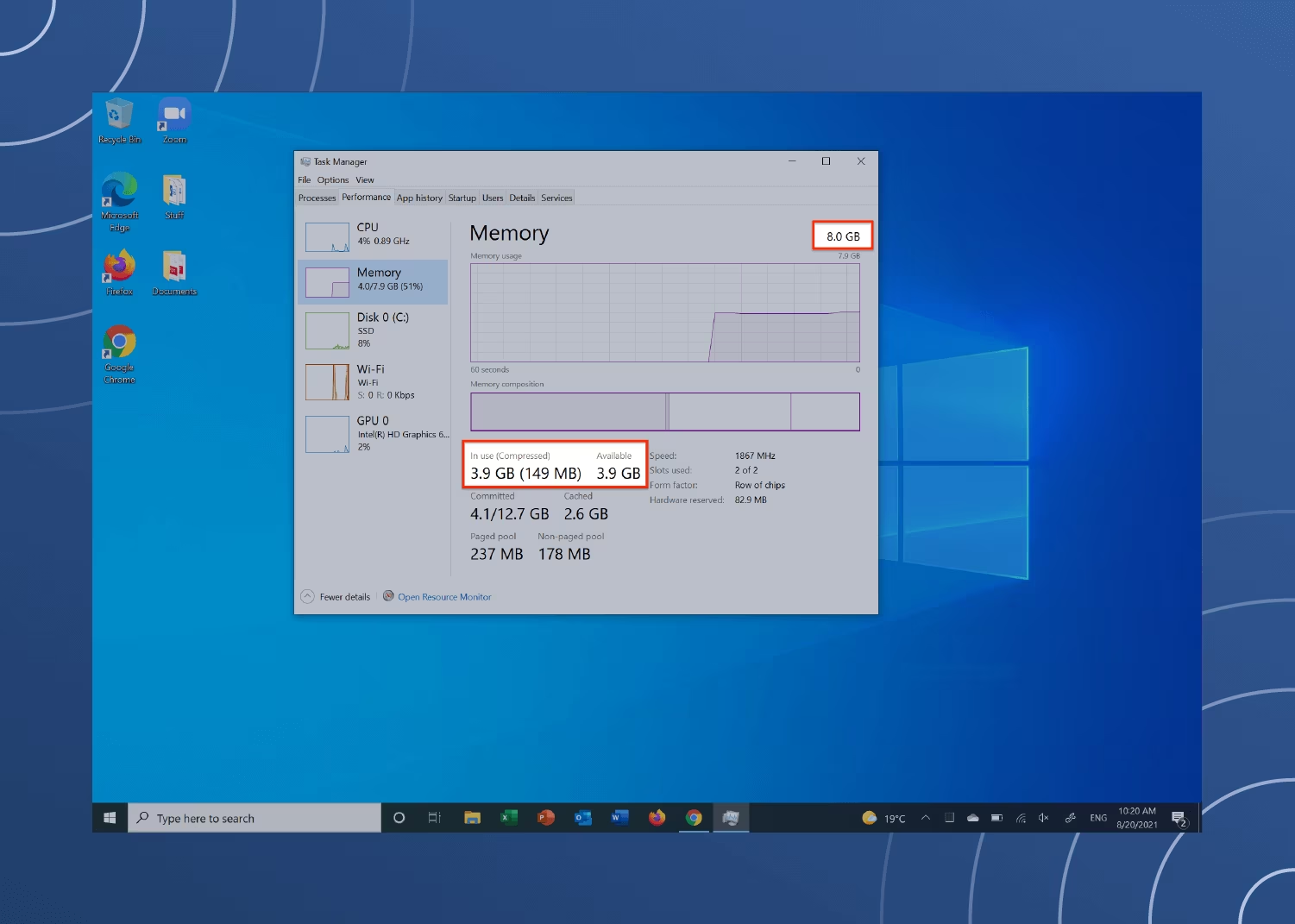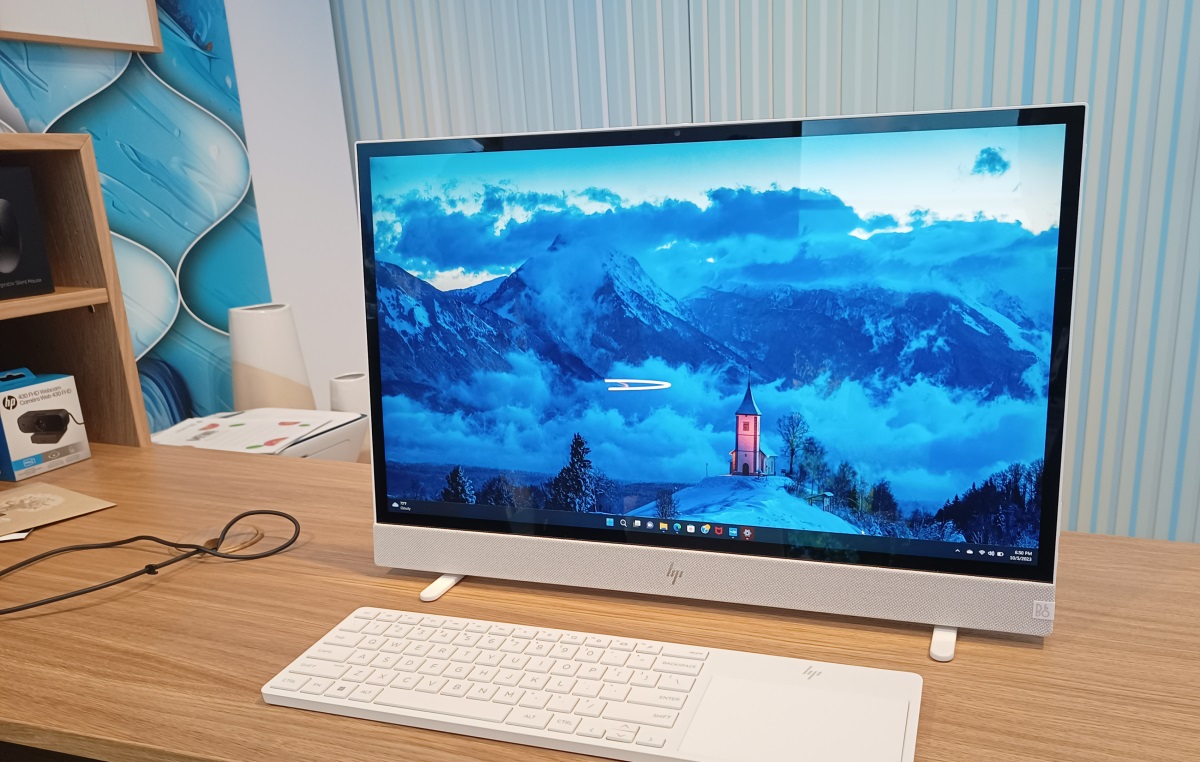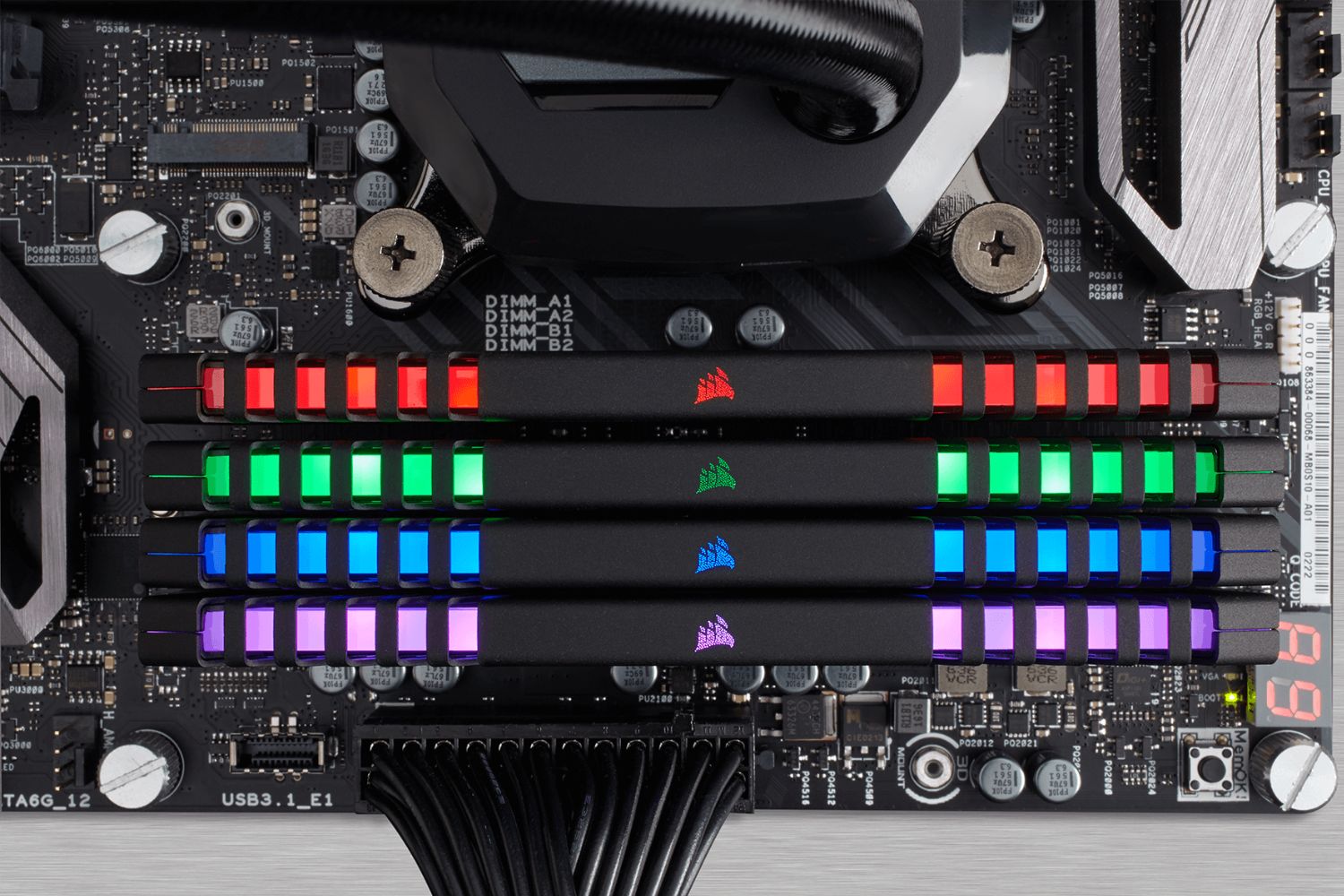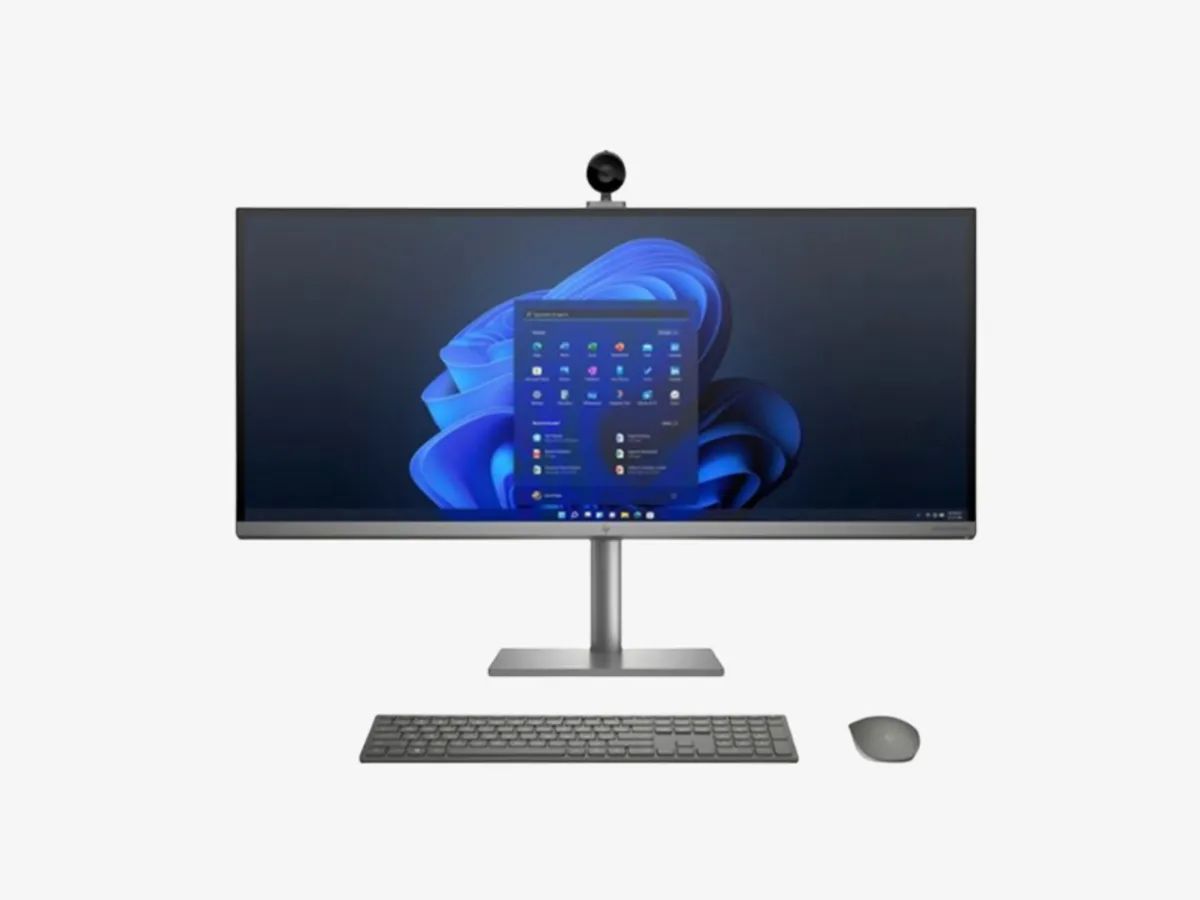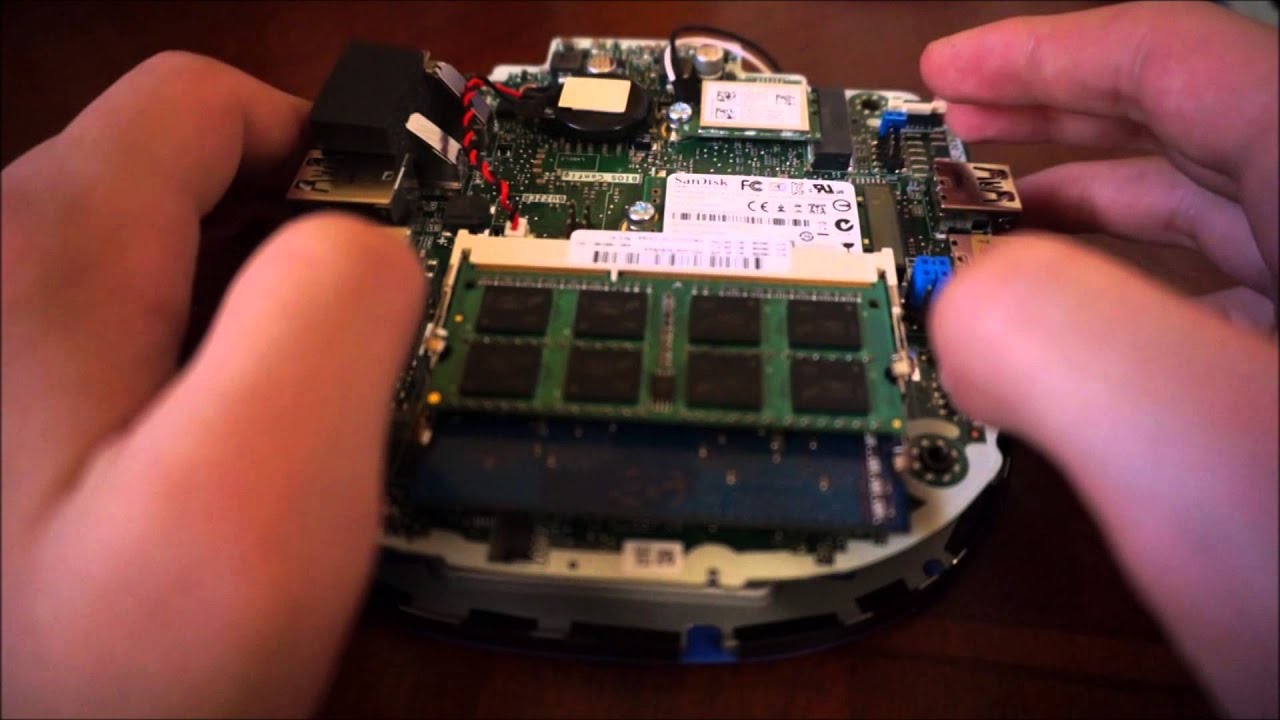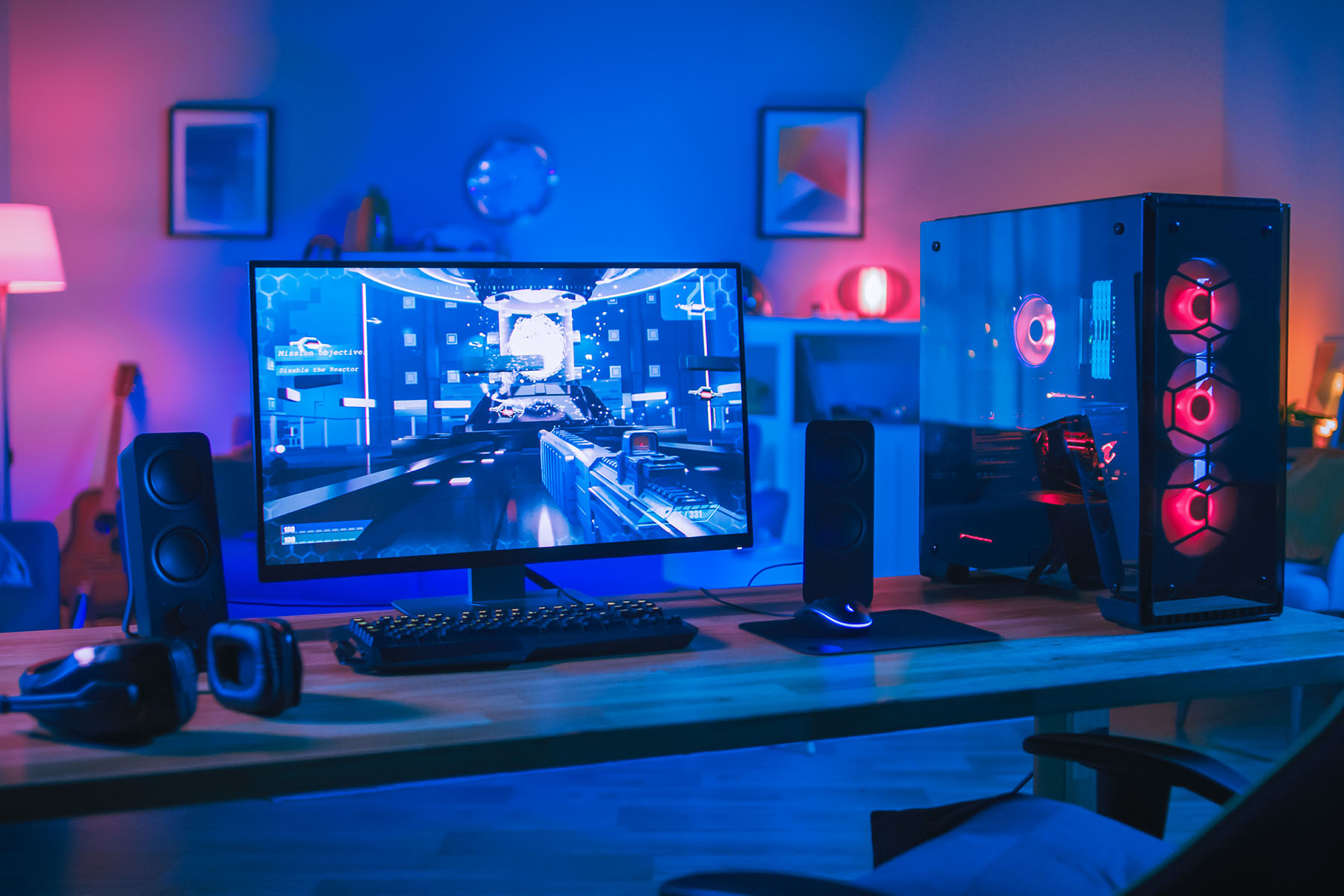Introduction
As technology continues to advance, our reliance on computers and other digital devices has become increasingly pervasive. Whether it’s for work, entertainment, or communication, most of us spend a significant amount of time interacting with our PCs. However, over time, you may notice that your computer’s performance starts to lag, and one of the common culprits behind this issue is the lack of available RAM.
RAM, or Random Access Memory, plays a crucial role in the overall performance and speed of your computer. It serves as a temporary storage space where your operating system and running applications store data that they need to access frequently. The more RAM your system has, the more efficiently it can perform tasks and run programs simultaneously.
Insufficient RAM can lead to sluggishness, freezes, and even crashes, which can disrupt your workflow and cause frustration. To ensure optimal performance and maintain the longevity of your PC, it is important to understand how to monitor and clear up RAM when needed.
In this article, we will explore the significance of RAM, how it affects your computer’s performance, and various methods to clear up RAM on your PC. Whether you are a beginner or an experienced user, mastering these techniques will empower you to optimize your system’s performance and ensure smoother multitasking capabilities.
What is RAM and why is it important?
RAM, or Random Access Memory, is a crucial component of your computer system. It is a form of volatile memory that stores data temporarily while your computer is running. Unlike permanent storage devices like hard drives or SSDs, RAM provides fast and temporary data access for your system and running programs.
RAM is essential for the efficient functioning of your computer because it allows the quick retrieval and storing of data that your operating system and applications need to access frequently. When you open a program or file, it gets loaded into RAM, allowing for quicker access and smooth execution. The more RAM your computer has, the more data it can store temporarily, leading to improved performance and multitasking capabilities.
One of the key benefits of RAM is its speed. Unlike hard drives or SSDs that rely on mechanical movements to read and write data, RAM utilizes electrical charges to store and retrieve information, resulting in significantly faster data access times. This speed enables your computer to quickly respond to your commands, launch programs without delays, and seamlessly switch between applications.
RAM also plays a vital role in preventing your computer from relying heavily on virtual memory. When your computer runs out of available RAM, it will utilize a portion of your hard drive or SSD as a substitute called virtual memory. However, accessing data from virtual memory is much slower compared to RAM, which can lead to performance degradation.
In summary, RAM is important because:
- It allows for faster access to frequently used data and programs.
- It enables efficient multitasking by providing temporary storage for running applications.
- It reduces reliance on slower storage devices for data retrieval.
- It contributes to smoother and more responsive computer performance.
By understanding the significance of RAM and its impact on your computer’s performance, you can take proactive steps to optimize its usage and ensure a seamless computing experience.
How RAM affects your computer’s performance
RAM, or Random Access Memory, plays a pivotal role in determining the overall performance of your computer. It impacts various aspects of your system’s functionality, from the speed at which programs launch to the ability to multitask efficiently. Understanding how RAM affects your computer’s performance is crucial in optimizing its usage and ensuring smooth operation.
One of the primary ways RAM influences your computer’s performance is by enabling faster data access. When you open an application or a file, it is loaded into RAM to provide quick access to the necessary data. The more RAM you have, the more programs and files can be loaded into memory simultaneously, resulting in quicker response times and seamless multitasking capabilities.
Insufficient RAM can lead to performance bottlenecks and slowdowns, especially when running resource-intensive applications or multitasking with numerous programs open simultaneously. When your computer runs out of available RAM, it compensates by using virtual memory, which involves swapping data to and from the hard drive or SSD. This process, known as paging or swapping, is significantly slower than accessing data directly from RAM, causing a noticeable decrease in performance.
Another aspect of RAM’s impact on performance is its role in caching. Caching involves storing frequently accessed data in RAM for quick retrieval, reducing the need to fetch data from slower storage devices. This caching mechanism can enhance the load times of frequently visited websites, improve the performance of file transfers, and contribute to a smoother overall user experience.
Furthermore, RAM also affects your computer’s ability to handle demanding tasks, such as video editing, gaming, or running virtual machines. These tasks often require a considerable amount of memory to store the data and instructions necessary for their execution. Insufficient RAM can result in lag, stuttering, or crashes when working with resource-intensive applications.
In summary, RAM directly impacts your computer’s performance by:
- Enabling faster data access and program loading times.
- Improving multitasking capabilities.
- Reducing reliance on slower storage devices through caching.
- Enhancing performance during resource-intensive tasks.
By understanding how RAM affects your computer’s performance, you can make informed decisions on managing your system’s memory resources, optimizing its usage, and ensuring smoother and more efficient operation.
Monitoring your RAM usage
Monitoring your RAM usage is an essential practice for identifying potential performance issues and optimizing the memory utilization on your computer. By keeping an eye on your RAM usage, you can determine if your system has enough memory to handle your workload or if you need to take steps to clear up RAM. Here are some methods for monitoring your RAM usage:
Task Manager
The Task Manager is a built-in Windows utility that allows you to monitor various aspects of your computer’s performance, including RAM usage. To open the Task Manager, you can right-click on the taskbar and select “Task Manager” from the context menu. Once the Task Manager window is open, navigate to the “Performance” tab, where you can view real-time data on CPU, memory, disk, and network usage. The “Memory” section provides information about your system’s RAM utilization, including the total amount of RAM, the amount in use, and the percentage of usage.
Resource Monitor
For a more in-depth analysis of your system’s resource usage, you can utilize the Resource Monitor, another built-in Windows tool. To open Resource Monitor, type “Resource Monitor” in the Windows search bar and select the corresponding result. In the Resource Monitor window, go to the “Memory” tab to access detailed information about the processes and services consuming the most memory. You can identify which applications are utilizing excessive RAM and take appropriate action to optimize their usage.
Third-Party Monitoring Tools
In addition to the built-in Windows utilities, there are several third-party monitoring tools available that provide advanced insights into your system’s RAM usage. These tools offer comprehensive data on memory utilization, including historical trends, detailed process information, and customizable alerts. Some popular third-party monitoring tools include RAMMap, HWMonitor, and AIDA64.
By regularly monitoring your RAM usage, you can identify any abnormal behavior or excessive memory consumption that may be impacting your computer’s performance. This information is crucial for determining when and how to clear up RAM to optimize your system’s memory resources and ensure a smooth computing experience.
Identifying programs and processes that consume the most RAM
Identifying the programs and processes that consume the most RAM on your computer is essential for optimizing memory usage and improving overall performance. By identifying resource-hungry applications, you can take appropriate action to mitigate excessive RAM usage and ensure efficient memory allocation. Here are some methods to identify programs and processes that consume the most RAM:
Task Manager
The Task Manager, a built-in Windows utility, provides a simple and effective way to identify RAM-consuming applications. Open the Task Manager by right-clicking on the taskbar and selecting “Task Manager.” In the Task Manager window, navigate to the “Processes” or “Details” tab. Locate the “Memory” or “Memory Usage” column, which displays the amount of RAM each process or application is using. By sorting this column in descending order, you can easily identify the programs and processes that are consuming the most RAM.
Resource Monitor
For more detailed insights into RAM usage, you can use the Resource Monitor. Open it by searching for “Resource Monitor” in the Windows search bar. In the Resource Monitor window, go to the “Memory” tab. This tab provides a comprehensive overview of the memory usage, including the processes and services utilizing the most RAM. You can sort the processes by their memory usage and identify the ones that are consuming excessive memory resources.
Third-Party Task Managers
There are also third-party task managers available that offer advanced features for monitoring RAM usage. These tools provide comprehensive information about processes, memory consumption, and performance metrics. Some popular third-party task managers include Process Explorer, System Explorer, and Process Hacker.
Windows Event Viewer
If you suspect that a particular process or application is causing memory issues, you can use the Windows Event Viewer to gain more insight. To open Event Viewer, search for “Event Viewer” in the Windows search bar. In the Event Viewer window, expand the “Windows Logs” section and select “System.” Look for events with the Event ID “2019” and “2020,” which indicate issues related to memory resources. These events can provide additional details about the processes or applications causing high RAM usage.
Identifying the programs and processes that consume the most RAM allows you to take appropriate action, such as closing unnecessary programs, terminating resource-intensive tasks, or adjusting application settings. By optimizing memory usage, you can improve overall system performance and ensure a smoother computing experience.
How to clear up RAM manually
When your computer’s RAM is running low, clearing up memory manually can help improve performance and resolve any sluggishness or freezing issues. Here are some methods you can use to clear up RAM manually:
Close unnecessary programs and processes
The simplest way to free up RAM is by closing any unnecessary programs or processes running in the background. Open the Task Manager by right-clicking on the taskbar and selecting “Task Manager.” In the Task Manager window, go to the “Processes” or “Details” tab. Identify resource-hungry programs or processes and right-click on them to end their tasks. Make sure to only close programs that are not essential for your current work or tasks.
Restart your computer
A quick and effective way to free up RAM is by restarting your computer. When you restart your computer, all running processes and programs are shut down, allowing for a fresh start and releasing any previously allocated memory. This can help clear up RAM and improve overall system performance.
Adjust system settings
You can optimize your system’s memory usage by adjusting some settings. Right-click on “My Computer” or “This PC” and select “Properties.” In the System window, click on “Advanced system settings” on the left-hand side. In the System Properties window, navigate to the “Advanced” tab and click on the “Settings” button under the “Performance” section. In the Performance Options window, select the “Advanced” tab, and click on “Change” under the “Virtual memory” section. Here, you can adjust the virtual memory settings by selecting either the “Automatically manage paging file size for all drives” option or the “Custom size” option to set a specific size for the paging file (virtual memory). Restart your computer for the changes to take effect.
Clear temporary files and cache
Temporary files and cached data can consume a significant amount of your system’s RAM. Clearing them can help free up memory. Use the built-in Disk Cleanup utility to remove temporary files. Open the File Explorer, right-click on the drive where your operating system is installed (usually C:), select “Properties,” and then click on “Disk Cleanup.” In the Disk Cleanup window, select the file types you want to delete, such as temporary files, system files, and browser cache, then click on “OK.” Confirm the deletion and wait for the utility to clear the selected files.
By implementing these manual methods, you can effectively clear up RAM and optimize the memory usage on your computer. Regular maintenance and monitoring of RAM usage will ensure a smoother and more efficient computing experience.
Clearing up RAM using built-in Windows tools
Windows provides built-in tools that can help clear up RAM efficiently and improve your computer’s performance. These tools are designed to manage memory resources and optimize the allocation of RAM. Here are some built-in Windows tools you can use to clear up RAM:
Windows Memory Diagnostic
The Windows Memory Diagnostic tool is a built-in utility that can help identify and resolve issues related to your computer’s RAM. To access this tool, type “Windows Memory Diagnostic” in the Windows search bar and select the corresponding result. You will be prompted to restart your computer and allow the tool to run a comprehensive memory test. This test helps detect any errors or problems with your RAM and can potentially resolve issues that may be causing memory-related performance problems.
Resource Monitor
As mentioned earlier, Resource Monitor is a powerful built-in tool that provides detailed insights into your system’s resource usage, including RAM. To open Resource Monitor, type “Resource Monitor” in the Windows search bar and select the corresponding result. In the Resource Monitor window, go to the “Memory” tab. Here, you can view real-time data on memory consumption and identify any memory-hungry processes or applications. By identifying and terminating these resource-intensive processes, you can clear up RAM and improve overall performance.
Task Manager
The Task Manager is a versatile built-in tool that not only allows you to monitor RAM usage but also lets you manage running processes and applications. To open the Task Manager, right-click on the taskbar and select “Task Manager.” In the Task Manager window, navigate to the “Processes” or “Details” tab. Here, you can view a list of active processes, along with the amount of memory each process is consuming. To clear up RAM, you can right-click on an unnecessary process and select “End Task” to terminate it.
Windows ReadyBoost
Windows ReadyBoost is a feature that allows you to use a USB flash drive or memory card as additional RAM for your computer. This can help increase the available memory and improve system performance. To enable ReadyBoost, insert a compatible USB flash drive or memory card into your computer and open File Explorer. Right-click on the drive, select “Properties,” and go to the “ReadyBoost” tab. Check the option “Use this device” and adjust the amount of space you wish to allocate for ReadyBoost. Click on “Apply” and “OK” to save the changes. Windows will use the connected device as additional cache memory, enhancing the performance of your system.
By using these built-in Windows tools, you can effectively clear up RAM, optimize memory usage, and improve the overall performance of your computer. Regularly monitoring and managing your system’s memory resources is essential for ensuring a smooth and efficient computing experience.
Using third-party software to optimize your RAM usage
In addition to the built-in Windows tools, there are several third-party software applications available that specialize in optimizing your RAM usage. These tools offer advanced features and functionalities to help manage memory resources more effectively and improve overall system performance. Here are a few examples of third-party software you can use to optimize your RAM usage:
CleanMyPC
CleanMyPC is a popular utility that provides a wide range of system optimization features, including RAM management. It can help identify and clear unnecessary files, temporary data, and cached entries that consume valuable memory resources. This software also allows you to disable startup programs and background processes that may be unnecessarily using RAM, ensuring that your computer’s memory is utilized efficiently.
CCleaner
CCleaner is another well-known software that offers a variety of system optimization functionalities, including RAM cleaning. It can clear temporary files, browser caches, and other unnecessary data that may be occupying RAM. CCleaner also provides a comprehensive analysis of your system’s performance and allows you to customize the cleaning process according to your preferences.
Razer Cortex
If you’re a gamer, Razer Cortex is a third-party software that can help optimize your system’s performance, including RAM usage, specifically for gaming purposes. It provides features such as prioritizing game processes, freeing up system resources from non-essential tasks, and managing background processes that consume excessive memory. Razer Cortex ensures that your computer allocates RAM efficiently to enhance gaming performance.
Advanced System Optimizer
Advanced System Optimizer is a comprehensive software solution that offers various optimization tools, including RAM management. It provides features to clean up unused memory, optimize memory usage, and improve overall system responsiveness. Advanced System Optimizer also offers system and registry cleaning capabilities, ensuring your computer’s performance remains optimal.
Before using any third-party software, it is essential to research and choose reliable and reputable applications from trusted sources. Additionally, it’s crucial to regularly update and maintain these tools to ensure compatibility with your system and to benefit from the latest enhancements.
Using third-party software to optimize your RAM usage can provide additional features and functionalities beyond what is offered by the built-in Windows tools. These tools can help drive better memory management, enhance overall system performance, and ensure that your computer’s resources are utilized efficiently.
Tips to prevent excessive RAM usage in the future
Preventing excessive RAM usage is crucial for maintaining optimal system performance and avoiding slowdowns or crashes. By adopting some preventive measures, you can ensure that your computer’s memory is utilized efficiently. Here are some tips to prevent excessive RAM usage in the future:
1. Limit startup programs:
Remove unnecessary programs from your computer’s startup list. Many applications automatically start when you boot up your system, consuming valuable RAM resources. Use the Task Manager or a third-party startup manager to disable non-essential programs from launching automatically.
2. Uninstall unnecessary programs:
Regularly review and uninstall any programs or applications that you no longer use. Uninstalling unnecessary software can free up disk space and reduce their impact on RAM usage. Use the built-in “Add or Remove Programs” utility in Windows to uninstall unwanted applications.
3. Optimize web browser usage:
Web browsers can consume a significant amount of RAM, particularly when multiple tabs or extensions are open. Limit the number of open tabs and remove unnecessary browser extensions. Consider using a leaner browser or utilizing feature-rich plugins that allow you to suspend tabs when they are not in use.
4. Increase physical RAM:
If your computer consistently struggles with low RAM availability, consider upgrading your physical RAM. Adding more RAM modules can significantly improve system performance and allow you to run memory-intensive applications more smoothly.
5. Use lightweight alternatives:
Opt for lightweight alternatives to resource-intensive software. For example, consider using lightweight text editors instead of full-featured word processors, or utilizing media players that consume fewer system resources. These alternatives can help reduce RAM usage and improve the overall responsiveness of your system.
6. Regularly update software:
Keep your operating system and software applications up to date. Software updates often include performance improvements and bug fixes that can help optimize RAM usage. Regularly check for updates and install them to ensure the best possible performance.
7. Scan for malware:
Malware infections can cause excessive RAM usage and deteriorate system performance. Regularly scan your computer with an up-to-date antivirus program to detect and remove any malware that may be running in the background and using up system resources.
Implementing these tips can help prevent excessive RAM usage and ensure that your computer’s memory is utilized efficiently. Regular maintenance, careful software selection, and system optimization are key to maintaining a smooth and responsive computing experience.
Conclusion
Understanding the importance of RAM and how it affects your computer’s performance is crucial for optimizing system resources and ensuring a smooth computing experience. By monitoring your RAM usage, identifying memory-hungry programs, and employing various methods to clear up RAM, you can enhance your computer’s performance and prevent sluggishness or freezing issues.
By utilizing built-in Windows tools like Task Manager and Resource Monitor, you have the ability to monitor and manage RAM usage effectively. Additionally, third-party software applications offer advanced features to optimize memory allocation and improve system performance. Whether you choose to manually close unnecessary programs, adjust system settings, or utilize dedicated software, clearing up RAM can greatly enhance your computer’s responsiveness and multitasking capabilities.
Furthermore, adopting preventive measures such as limiting startup programs, uninstalling unnecessary software, and optimizing web browser usage can help prevent excessive RAM usage in the future. Regularly updating software, increasing physical RAM if necessary, and scanning for malware also contribute to maintaining optimal system performance.
By implementing these techniques and adopting good practices, you can ensure that your computer’s RAM is utilized efficiently, resulting in improved speed, response times, and overall system stability.
Remember, effective RAM management is an ongoing process. Regularly monitoring and optimizing your system’s memory resources will help you maintain peak performance and enjoy a smooth and responsive computing experience.







